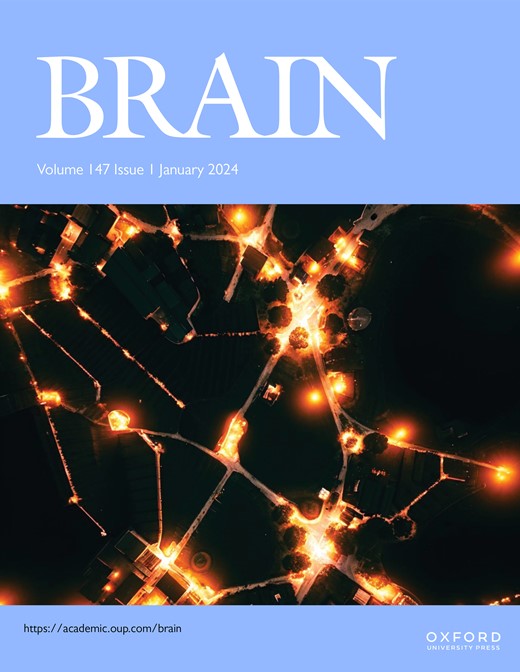Shared orbitofrontal dynamics to a drug-themed movie track craving and recovery in heroin addiction
IF 10.6
1区 医学
Q1 CLINICAL NEUROLOGY
引用次数: 0
Abstract
Movies captivate groups of individuals (the audience), especially if they contain themes of common motivational interest to the group. In drug addiction, a key mechanism is maladaptive motivational salience attribution whereby drug cues outcompete other reinforcers within the same environment or context. We predicted that while watching a drug-themed movie, where cues for drugs and other stimuli share a continuous narrative context, fMRI responses in individuals with heroin use disorder (iHUD) will preferentially synchronize during drug scenes. Thirty inpatient iHUD (24 male) and 25 healthy controls (16 male) watched a drug-themed movie at baseline and at follow-up after 15 weeks. Results revealed such drug-biased synchronization in the orbitofrontal cortex (OFC), ventromedial and ventrolateral prefrontal cortex, and insula. After 15 weeks during ongoing inpatient treatment, there was a significant reduction in this drug-biased shared response in the OFC, which correlated with a concomitant reduction in dynamically-measured craving, suggesting synchronized OFC responses to a drug-themed movie as a neural marker of craving and recovery in iHUD.对毒品主题电影的共同眶额叶动力学追踪海洛因成瘾者的渴求和康复情况
电影能吸引一群人(观众),尤其是当电影的主题与群体的共同动机相关时。吸毒上瘾的一个关键机制是适应不良的动机显著性归因,即在同一环境或背景下,毒品线索会超越其他强化物。我们预测,在观看一部以毒品为主题的电影时,毒品线索和其他刺激物共享一个连续的叙事背景,海洛因使用障碍患者(iHUD)的 fMRI 反应将在毒品场景中优先同步。30 名海洛因使用障碍住院患者(24 名男性)和 25 名健康对照组患者(16 名男性)在基线和 15 周后的随访中观看了一部以毒品为主题的电影。结果显示,眶额叶皮层(OFC)、腹外侧和腹外侧前额叶皮层以及岛叶出现了这种药物偏向性同步。经过15周的持续住院治疗后,眶额皮层中的这种药物偏向共享反应显著减少,这与动态测量的渴求同时减少相关,表明眶额皮层对毒品主题电影的同步反应是iHUD患者渴求和康复的神经标记。
本文章由计算机程序翻译,如有差异,请以英文原文为准。
求助全文
约1分钟内获得全文
求助全文
来源期刊

Brain
医学-临床神经学
CiteScore
20.30
自引率
4.10%
发文量
458
审稿时长
3-6 weeks
期刊介绍:
Brain, a journal focused on clinical neurology and translational neuroscience, has been publishing landmark papers since 1878. The journal aims to expand its scope by including studies that shed light on disease mechanisms and conducting innovative clinical trials for brain disorders. With a wide range of topics covered, the Editorial Board represents the international readership and diverse coverage of the journal. Accepted articles are promptly posted online, typically within a few weeks of acceptance. As of 2022, Brain holds an impressive impact factor of 14.5, according to the Journal Citation Reports.
 求助内容:
求助内容: 应助结果提醒方式:
应助结果提醒方式:


